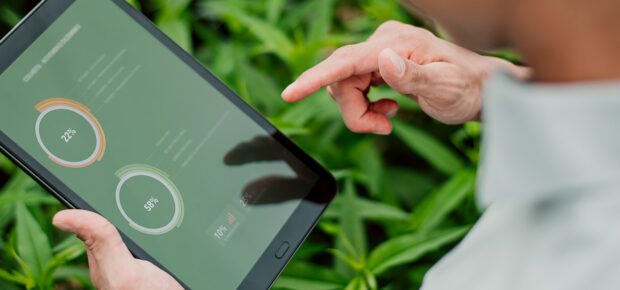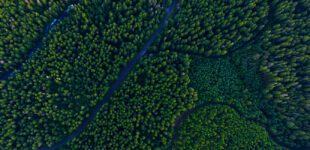October 17, 2023
By 2050, the world’s population is expected to reach nine billion. And while the number of people on earth will increase, the amount of land available for agriculture is limited. To feed a growing population, every square meter of farmable land needs to be more productive.
The need to produce more food comes at a time when climate change may make that more difficult. A warmer atmosphere holds more moisture, making intense rainstorms more likely. Changes in climate may also increase the risk of droughts. And rising temperatures may increase the likelihood of plant disease and pests.
IEEE Senior Member Octavian Adrian Postolache, a professor at the Instituto Universitário de Lisboa in Portugal, noted that farmers may not be able to rely on past experience to plant crops for the future.
Precision agriculture may be the key to solving some of these urgent challenges.
In a recent webinar as part of the IEEE Instrumentation and Measurement Society’s Distinguished Lecturer program, Postolache described an emerging ecosystem of technology that brings IoT, satellite technology, drones, cloud computing, mobile connectivity and artificial intelligence to the farm field.
What is Precision Agriculture?
The term precision agriculture refers to a combination of technologies that finds the “goldilocks zone” for farm inputs like water, pesticides and fertilizers to maximize yields and efficiency. It’s about using just the right amount of these inputs – not too much so that the excess goes to waste, and not too little that the farmer produces less than what they could.
It emerged in the 1990s through the use of GPS-guided tractors, which allowed farmers to decrease the width between crop rows and thus increase the amount they could grow on a piece of land. The tractors are primarily used on large farms that grow row-crops like corn and wheat, for example. In the U.S. half of the country’s large, row-crop producing farms rely on tractor guidance, according to the USDA. But precision agriculture isn’t limited to tractors. There is a growing use of drones to apply pesticides.
But small and medium-sized farms make up the bulk of agricultural production in the U.S. and around the world. Putting the tools of precision agriculture in the hands of those farmers could help improve yields. Postolache envisions a massive evolution in this space, what he calls “a distributed sensing system characterized by fixed and mobile nodes.” And he says those tools are available today.
Emerging Tools
Small farms produce up to 80 percent of the food in sub-Saharan Africa and Asia, according to a UN report. The emerging class of precision agriculture tools may be able to serve smaller farms, and farms that grow things other than row crops.
The tools include the following:
Soil sensors measure moisture content and nutrients such as nitrogen, potassium and phosphorus in the soil. Over-watering and over-fertilization is a common occurrence in agriculture. Soil sensors could be used to precisely identify areas that need attention, and allow farmers to reduce fertilizer use in places where it is not needed. Postolache’s webinar details several sensors that have been developed for this purpose, some of the conditions for using them, and meteorological considerations for calibrating them.
Drones and satellites can be used for remote sensing to monitor areas of water stress, pest infiltration or plant health. Drones can further be used for precise irrigation and for the application of fertilizer and pesticides. Furthermore, Postolache’s webinar notes that drones and satellite data can work in conjunction with fixed soil sensors to create a comprehensive picture of farms.
Cloud and Fog Computing for storing and analyzing data collected by sensors and drones. Fog computing architectures would facilitate the storage and processing of data on smaller devices, bringing automated decision-making closer to the source.
Mobile communications for facilitating the transfer of data from IoT devices and sensors to the cloud. Perhaps one of the most important tools in precision agriculture, mobile devices, like tablets and smartphones, can be used to control individual devices and machines.
Artificial Intelligence to better leverage data, the lifeblood of precision agriculture. Imagine, for example, that a farmer detects some form of crop damage, but cannot identify its source. The farmer may be able to use an image recognition system to identify the pest causing the damage. The system might furthermore recommend the best course of action to mitigate the damage. AI can also help farmers irrigate crops and optimize inputs.
Precision agriculture, born out of the marriage between traditional farming practices and modern technology, has emerged as a cornerstone for efficient and sustainable farming. The convergence of data analytics with the age-old tradition of farming is not merely a technological evolution, but a necessary stride towards achieving food security and sustainable agriculture worldwide. By customizing the deployment of farm inputs and monitoring crop health in real-time, precision agriculture is helping to foster a more productive and sustainable agricultural landscape, ensuring that farms of all sizes can thrive in today’s digital age.
You can review the full webinar here.





 Liquid Infrastructure: Our Planet's Most Precious Resource
Liquid Infrastructure: Our Planet's Most Precious Resource The Impact of Technology in 2025
The Impact of Technology in 2025 Quantum and AI: Safeguards or Threats to Cybersecurity?
Quantum and AI: Safeguards or Threats to Cybersecurity? Why AI Can't Live Without Us
Why AI Can't Live Without Us Bits, Bytes, Buildings and Bridges: Digital-Driven Infrastructure
Bits, Bytes, Buildings and Bridges: Digital-Driven Infrastructure Impact of Technology in 2024
Impact of Technology in 2024 Emerging AI Cybersecurity Challenges and Solutions
Emerging AI Cybersecurity Challenges and Solutions The Skies are Unlimited
The Skies are Unlimited Smart Cities 2030: How Tech is Reshaping Urbanscapes
Smart Cities 2030: How Tech is Reshaping Urbanscapes Impact of Technology 2023
Impact of Technology 2023 Cybersecurity for Life-Changing Innovations
Cybersecurity for Life-Changing Innovations Smarter Wearables Healthier Life
Smarter Wearables Healthier Life Infrastructure In Motion
Infrastructure In Motion The Impact of Tech in 2022 and Beyond
The Impact of Tech in 2022 and Beyond Cybersecurity, Technology and Protecting Our World
Cybersecurity, Technology and Protecting Our World How Technology Helps us Understand Our Health and Wellness
How Technology Helps us Understand Our Health and Wellness The Resilience of Humanity
The Resilience of Humanity Harnessing and Sustaining our Natural Resources
Harnessing and Sustaining our Natural Resources Creating Healthy Spaces Through Technology
Creating Healthy Spaces Through Technology Exceptional Infrastructure Challenges, Technology and Humanity
Exceptional Infrastructure Challenges, Technology and Humanity The Global Impact of IEEE's 802 Standards
The Global Impact of IEEE's 802 Standards Scenes of our Cyber Lives: The Security Threats and Technology Solutions Protecting Us
Scenes of our Cyber Lives: The Security Threats and Technology Solutions Protecting Us How Millennial Parents are Embracing Health and Wellness Technologies for Their Generation Alpha Kids
How Millennial Parents are Embracing Health and Wellness Technologies for Their Generation Alpha Kids Space Exploration, Technology and Our Lives
Space Exploration, Technology and Our Lives Global Innovation and the Environment
Global Innovation and the Environment How Technology, Privacy and Security are Changing Each Other (And Us)
How Technology, Privacy and Security are Changing Each Other (And Us) Find us in booth 31506, LVCC South Hall 3 and experience the Technology Moon Walk
Find us in booth 31506, LVCC South Hall 3 and experience the Technology Moon Walk Virtual and Mixed Reality
Virtual and Mixed Reality How Robots are Improving our Health
How Robots are Improving our Health IEEE Experts and the Robots They are Teaching
IEEE Experts and the Robots They are Teaching See how millennial parents around the world see AI impacting the lives of their tech-infused offspring
See how millennial parents around the world see AI impacting the lives of their tech-infused offspring Take the journey from farm to table and learn how IoT will help us reach the rising demand for food production
Take the journey from farm to table and learn how IoT will help us reach the rising demand for food production Watch technical experts discuss the latest cyber threats
Watch technical experts discuss the latest cyber threats Explore how researchers, teachers, explorers, healthcare and medical professionals use immersive technologies
Explore how researchers, teachers, explorers, healthcare and medical professionals use immersive technologies Follow the timeline to see how Generation AI will be impacted by technology
Follow the timeline to see how Generation AI will be impacted by technology Learn how your IoT data can be used by experiencing a day in a connected life
Learn how your IoT data can be used by experiencing a day in a connected life Listen to technical experts discuss the biggest security threats today
Listen to technical experts discuss the biggest security threats today See how tech has influenced and evolved with the Games
See how tech has influenced and evolved with the Games Enter our virtual home to explore the IoT (Internet of Things) technologies
Enter our virtual home to explore the IoT (Internet of Things) technologies Explore an interactive map showcasing exciting innovations in robotics
Explore an interactive map showcasing exciting innovations in robotics Interactively explore A.I. in recent Hollywood movies
Interactively explore A.I. in recent Hollywood movies Get immersed in technologies that will improve patients' lives
Get immersed in technologies that will improve patients' lives